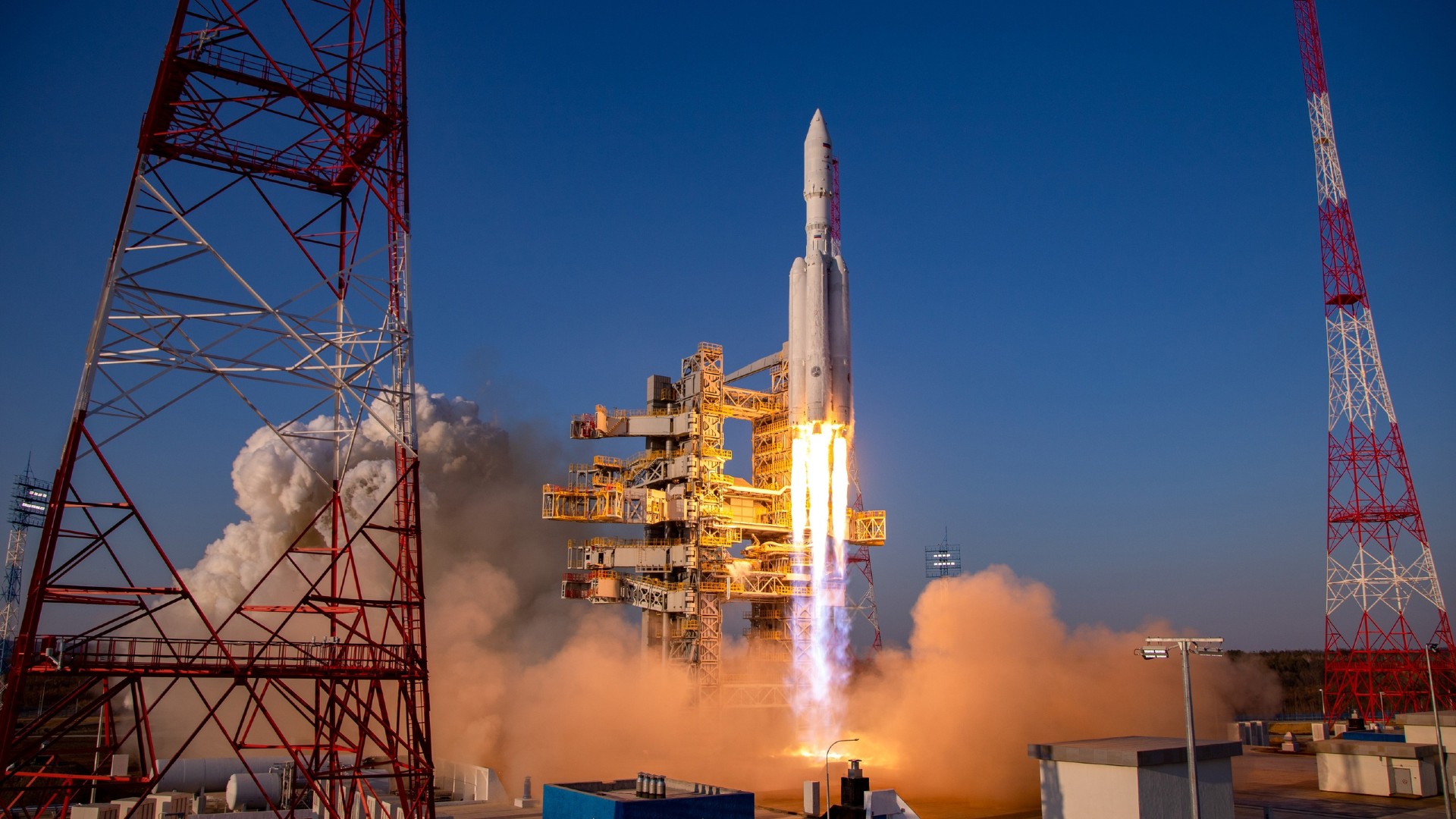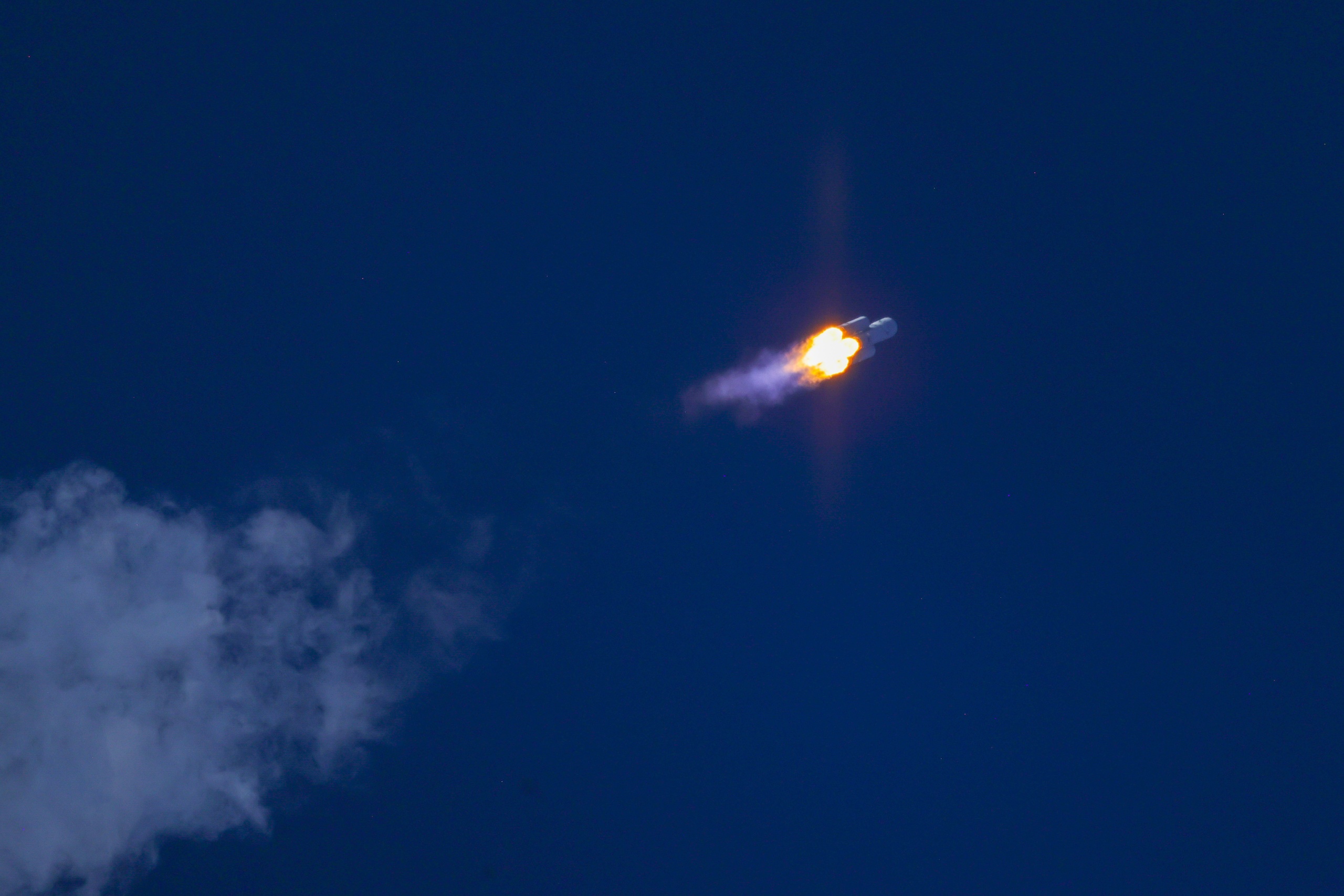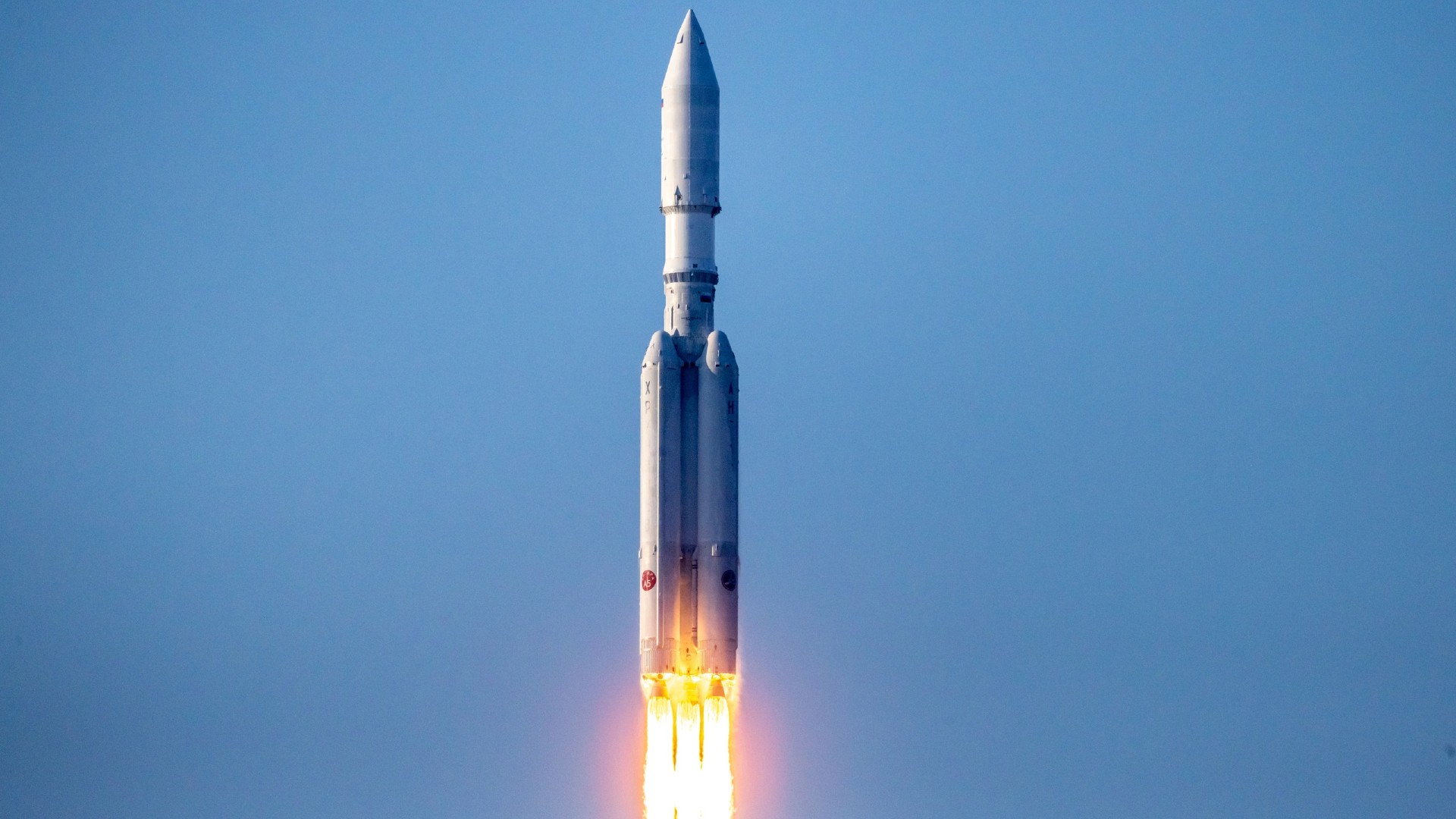
The Russian space agency Roscosmos conducted a successful orbital test launch of its new Angara A5 heavy-lift rocket, helping to open a new chapter of spaceflight for the nation.
The Angara A5 lifted off April 11 on its fourth orbital test launch, and its first from the Vostochny Cosmodrome in Russia's far east. The 179-foot-tall (54.5 meters) rocket is produced entirely from Russian components and uses a more environmentally friendly fuel than the nation's previous heavy-lift rocket, the Proton-M.
"The rocket worked according to plan," Roscosmos said in a Telegram post after the launch. "This launch kicks off flight design tests of the Amur space rocket with Angara heavy-lift launch vehicles at Vostochny."
Related: Russia launches heavy-lift Angara rocket on 3rd test flight, but misses intended orbit: reports
The launch came after a scrubbed attempt on April 9 and a delayed second attempt on April 10. This marks the fourth time Roscosmos has launched the Angara A5. Its first test flight took place in 2014, and its second in 2020.
In 2021, Russia's space agency launched the rocket on its third test mission, but it missed its intended orbit when its second stage experienced an anomaly.
The April 11 flight was a success, according to Roscosmos, which reported via Telegram that the Angara A5 successfully placed a cubesat developed by Avant Space into low Earth orbit.

"The creation of the Angara space rocket complex (KRK) is a task of special national importance," Roscosmos said, according to Reuters. "The commissioning of the Angara spacecraft will allow Russia to launch spacecraft of all types from its territory and provide our country with independent guaranteed access to space."

The experimental cubesat launched into orbit aboard the Angara A5, known as Gagarinets, will be used to verify a laser system that is designed to project images such as QR codes or advertisements in the night sky, according to Avant Space.
The company claims that a constellation of satellites orbiting around 300 to 372 miles (500 to 600 kilometers) high will be able to project images visible even in cities with high light pollution. These artificial sky sights will be visible to millions for up to three to five minutes, according to Avant Space.







